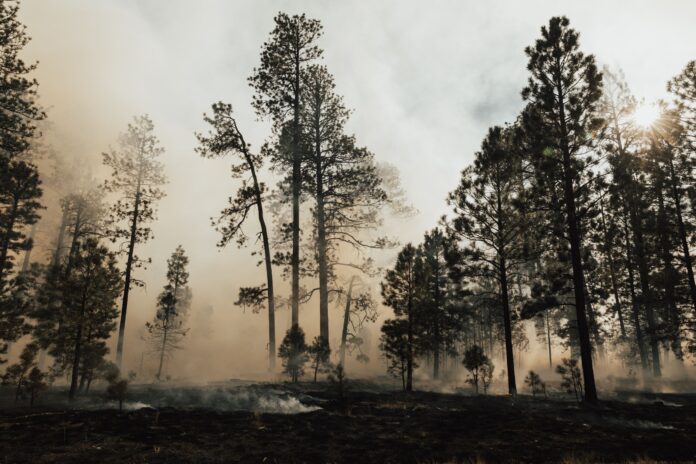Recently, both Malaysia and Singapore have raised concerns regarding the haze that has enveloped their regions, attributing its source to Indonesia. However, the National Disaster Management Agency (BNPB) has sought to provide a more nuanced perspective on this issue, indicating that the haze in these two neighboring countries may not be exclusively linked to forest and land fires in Indonesia.
Abdul Muhari, the Acting Head of the Disaster Data, Information, and Communication Center at BNPB, has emphasized that there are additional factors at play. He has pointed out that in both Malaysia and Singapore, there are indications of particulate sources and air pollution that contribute to the haze.
“It’s not necessarily [solely originating] from Indonesia. Is it solely stemming from land and forest fires in Indonesia? Not necessarily,” Muhari stated during a broadcast on BNPB Indonesia’s YouTube channel on a recent Tuesday (10/10).
Muhari has further clarified the situation by highlighting the presence of particulate sources in Singapore and Malaysia. He emphasized that these sources are not exclusively linked to Indonesian territory. In essence, this means that the haze may have origins beyond Indonesia’s borders.
Moreover, Muhari’s real-time monitoring has revealed an interesting twist in the story. He mentioned that the particulate matter from Singapore, often perceived as an affected party, has in fact dispersed and affected some of the smaller islands surrounding Indonesia.
The intricacies of this situation are not limited to external sources. Muhari refrained from delving into a detailed breakdown of these particulate sources originating from Singapore and Malaysia. This suggests that there might be complexities beyond a straightforward attribution to Indonesia.
Muhari’s insights have provided a more comprehensive understanding of the issue. He acknowledged that particulate sources can be found in various regions within Indonesia. Notably, these sources were identified in Kalimantan, Jakarta, and Semarang.
To illustrate the complexity of the situation, Muhari shared an example that challenges the common narrative. He posed the question of whether the haze shrouding Jakarta could be solely attributed to forest and land fires. His answer was a resounding “no.” This highlights that the haze issue is multifaceted and should not be hastily ascribed to a single source.
Muhari went on to explain that the presence of haze is intricately linked to the prevailing dry season conditions. When particulate sources are detected in a particular area, the haze persists in that region. The rarity of rainfall further compounds this problem, as it allows particulate matter to remain suspended in the air and settle in the affected area.
In essence, the seasonal weather patterns and the behavior of pollutants play a significant role in this complex environmental issue. As Muhari stated, particulate matter, whether from vehicle emissions or industrial processes, tends to linger when not washed away by rain. The situation in Jakarta, for instance, underscores the necessity of a Traffic Management Center to address these challenges effectively.
Previously, Malaysia took a diplomatic step to address the cross-border haze issue by sending a letter to the Indonesian government. This gesture reflected Malaysia’s concerns regarding the haze caused by forest and land fires (karhutla), which had recently impacted various regions of the country.
The Malaysian Minister of Natural Resources, Environment, and Climate Change (NRECC), Nik Nazmi Nik Ahmad, confirmed the letter was directed to the Indonesian Minister of Environment and Forestry, Siti Nurbaya Bakar, as reported by the New Straits Times. This diplomatic communication aimed to address the transboundary haze issue and foster cooperation.
It’s important to note that the Indonesian government, through the Minister of Environment and Forestry, Siti Nurbaya Bakar, and the Coordinating Minister for Political, Legal, and Security Affairs, Mahfud MD, responded to these concerns.
They refuted claims that the haze originating from forest and land fires in Indonesia had spread to neighboring countries. This demonstrates the significance of diplomatic dialogue in addressing complex regional environmental challenges.























